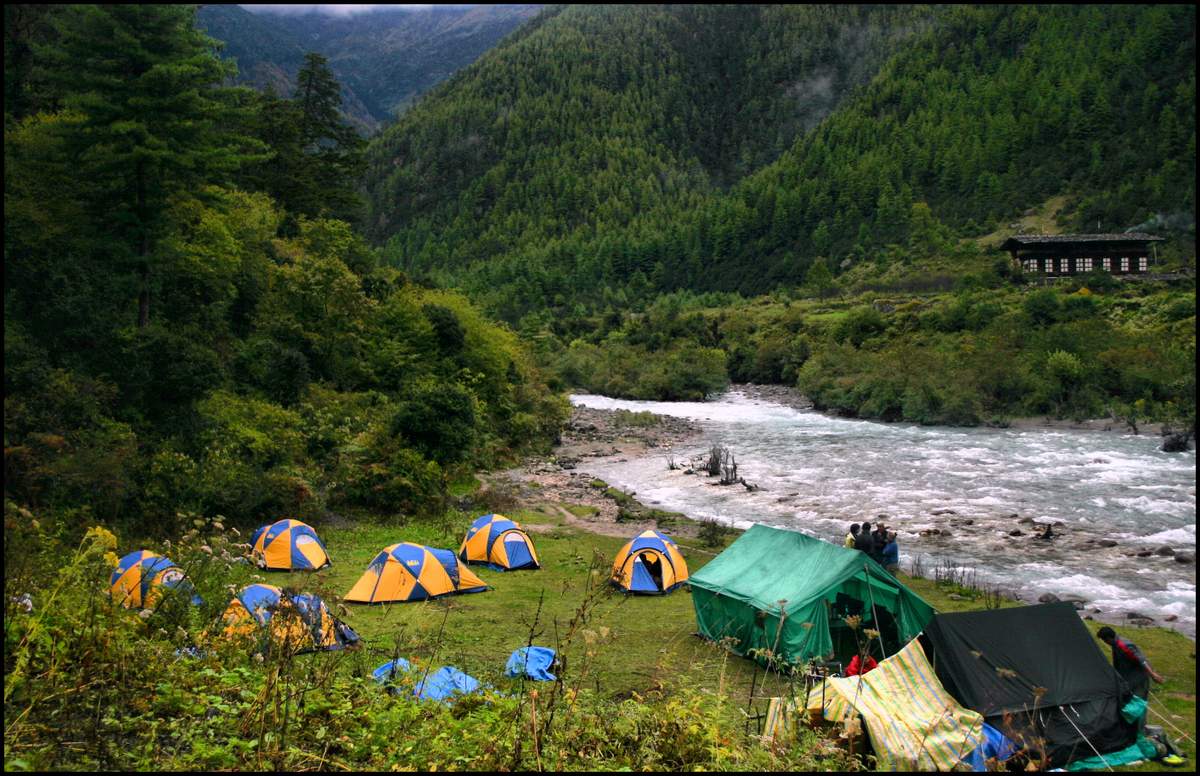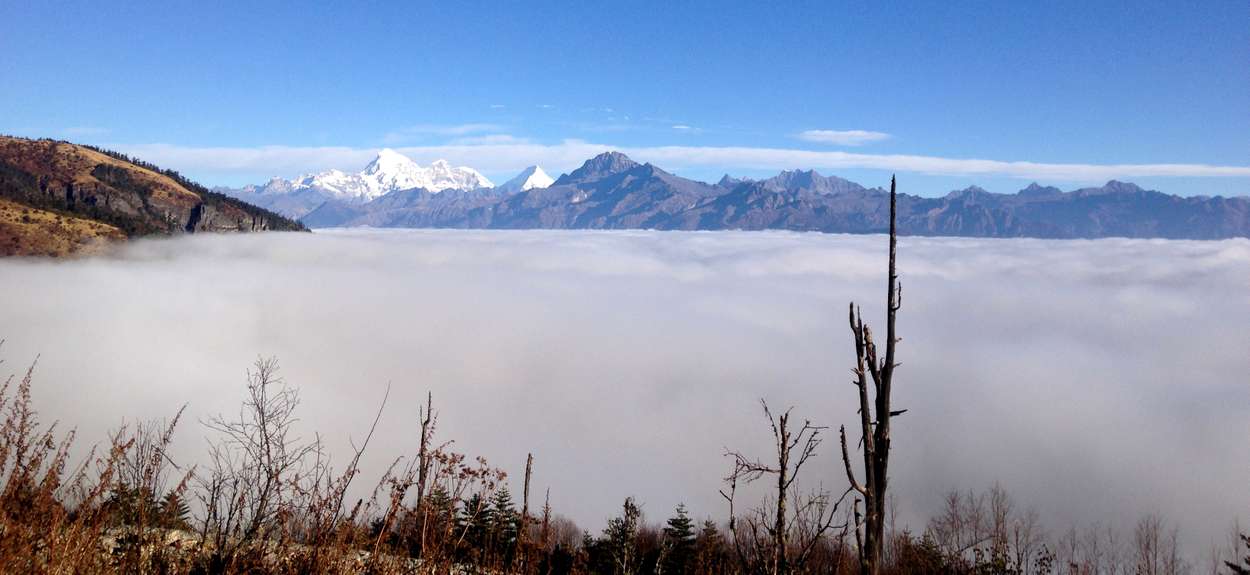 |
| Tengboche monastery with the Lhotse wall and Ama Dablam behind- Everest is in the clouds |
Guest Post and Photographs by Jacquelyn Sy
I seem to have a knack for getting up close and personal to gloriously, majestic nature places and sometimes, to great, holy people. I thank the high heavens and personal alignment for this supreme auspiciousness. Every time it happens, my invisible body soars to make a giant sweeping kowtow with my arms spread wide open in receiving exuberance; my forehead kissing the ground beneath in deep appreciation. My heart is humbled with overflowing compassion. As if in that blissful moment, every thing that my gaze touches is filled with love. These are truly the times I feel the most alive and exhilarated. And the kindness of those I meet on the path, the pure souls with heartfelt smiles and open hearts who are the bridges for my next journeys and beyond are truly my dearest angels. Most of them I may not see again for they are from remote places, but they are remembered with so much fondness. It is my hope that with each remembrance and reminiscing of them, a beautiful, white cloud puff of goodness goes their way.
One such encounter happened in the midst of my Himalayan hike late last year:
We have reached the town of Tengboche. Except for long stretches of rocky terrain, gigantic snowcapped mountains, and huge canvases of blue skies, there is nothing here except for flimsy, wooden lodgings for hikers and the beautiful, majestic Thyangboche Monastery – the last Tibetan Buddhist monastery deep in the heart of the Khumbu, surrounded on all four corners by a sweeping panorama of the Himalayan mountains.
 |
| Looking from the monastery at the lodges of Tengboche and Kangtega and Thamserku behind |
At this point, you may ask what I was doing there. There really is no solid answer except that I went because I could. I wanted to experience the beauty of the Himalayas. I wanted to get out there and have a taste of the fabled Everest that everyone gushes about, and satisfy a curiosity. To experience living on this planet, that is all. This tour that was led by esteemed Himalayan photographer and author Sujoy Das was full already, but he still managed to squeeze me in. All the signs were green so I went.
 |
| The chorten at the monastery |
My two fellow hikers said that there was an English interpreter. But when they asked a question about a world economic problem, the old holy man just gave a smile. Why they asked such a question is beyond me but it seemed the Rinpoche does not endeavor to be a philosopher or an economist.
This might be it, I thought. When he sees me, he would recognize a fellow spiritual kindred soul and open his arms wide to welcome me. I smiled at my wild imagination.
I further picked up from their conversation that the Rinpoche would be open to receive visitors at 5pm. “5pm?!” I thought. It would be almost dark by then and the wind would be howling cold. Besides, I would need to use my flashlight to find my way back to the lodge. I have to find a way to get to the Rimpoche before that time. I trusted that my visualization would lead me there somehow.
We entered the main prayer hall and sat on soft, square red cushions. The radiant beams of sunlight streamed in from tall windows bathing us with its soft rays. Juniper incense smells wafted in the air filling our senses, and the guttural, trancelike chanting from the monks filled the surrounds. The room swirled with soft drumming, singing bowls and tinkling bells accompanying the most soothing prayer chants. I sat in glorious meditation with my eyes closed, smilingly beatifically as I let the sounds and the setting take me into that peaceful, blissful journey of just being. Just before opening my eyes, a beautiful pink lotus flower appeared unfurling its resplendent petals in the abyss of my mind. I breathed the sweet nectar of peace and bliss in that timeless moment.
After the ceremony was over, people started leaving. I loitered around the monastery grounds thinking of how to gravitate towards the right door that would lead to the Rinpoche’s quarters so they could welcome their unwelcome visitor. Maybe a nice girl’s charming smile would make every thing alright.
There were too many doors and hardly a soul in the back compound. I meandered aimlessly up and down, back and forth. After a while, I couldn’t believe I had to give up my quest and trudged out to the main gate. But inside, I was still hoping. I saw a group of monks standing around in hearty laughter near the gate. Something tells me to go say hello.
 |
| Jacquelyn with the monks |
They broke into merry laughter. These monks really do have a sense of humor. I am fast becoming their telly of entertainment for the evening.
The monk who spoke the best English had a birthmark near his right eye. He peered at me seriously, and asked, “Do you want to see the Rinpoche?” Oh, wow! I nodded my head vigorously and gave them my mega-watt smile. He said the Rinpoche’s bodyguard would accompany me. A young monk in jogging pants and a red robe came over.
The monk with the birthmark further asked me, “Would you like a white scarf? It’s to receive blessings from the Rinpoche.” I didn’t know what the white scarf was for but asked hesitantly, "How much is it?” He looked at me somewhat sternly, “It is free. We do not ask people to pay. How many do you want?” Not wanting to impose, I said, “One, please.” He said, “Don’t you want more for your family?” I had wanted to say, “Yes, give me the maximum.” But I stopped myself from taking great advantage and took one.
The young monk bodyguard led me down the cloistered alley to the Rinpoche’s quarters. I was greeted by a boisterous, white poodle. I came in and saw the Rinpoche deep in prayer. A sutra scroll laid out before him. Prayer beads on one hand and the other hand raised following his lips in recitation. He merely acknowledged me, the unwanted visitor. I felt like a fly that came to disturb one who was in deep prayer, and had to be swatted. He looked at me momentarily under heavy eyelids. For a moment, I was lost in the shining, dark pupils of his small eyes that seemed to cover them entirely. The air was thick with prayer.
The young monk gave him the white scarf, he touched it lightly. He also gave him a red string, which he also touched lightly. I didn’t know what to do with it. The young monk told me to wear it around my neck. Later on, it dawned upon me that the scarf and the red string were supposed to be charged with the Rinpoche’s positive energy, and would be beneficial to one who wears them. My spirits lifted the moment I wore them. In fact, that night was my deepest, most relaxing sleep in the whole 2.5-week Himalayan hike. I was so reinvigorated the next day that I was ahead of the group and hiking so effortlessly.
 |
| With the Rinpoche of Tengboche |
When he came back to check on me, I was finished with the precious tea, completely relaxed and blissful. As I waved him goodbye by the monastery gates, my heart pregnant with gratitude, and both of us with super big smiles as if we had just won the lottery, I was floating on cloud 9. A lotus flower blossomed in my heart for this sweet, simple kind gesture from a stranger to a happy girl visitor from afar. At that moment, we were strangers no more but good friends sharing very few words and a silent understanding.
Truly a beautiful encounter I shall cherish forever.
Jacquelyn Sy trekked with South Col Expeditions to Everest Base Camp in November 2012.












